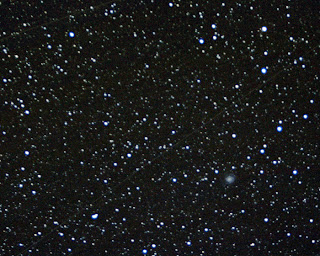In the spirit of "galaxy season", you'll notice that many of my posts for awhile will be mostly me trying to get certain galaxies. Tonight I tried for a small and not so bright object, distanced at about 25 million light year away, called
Pinwheel Galaxy, m101. As a bonus there are two trails left by two different satellites which just happened to cross infront of my image. One being NOAA 17, a weather satellite, and Cosmos 2428, a russian electronic intelligence satellite.
4 subs 2 darks
3 minutes @ f2.8
FL set to 110mm
I took the opportunity to try and take a stab at the Horsehead Nebula one more time this season and the flame nebula. In the upper part of the image I noticed a fuzzy patch. This turned out to be a nebula that I never saw before called M78.
10 subs w/ 5 darks
1minute @ f2.8
FL set at 175mm















